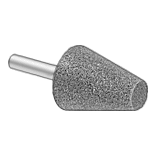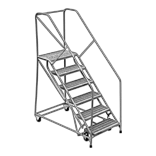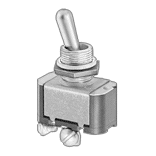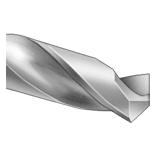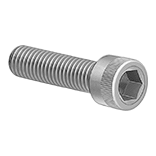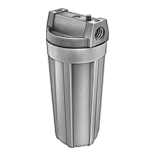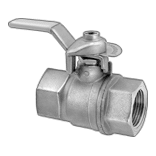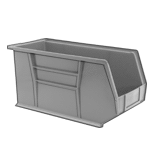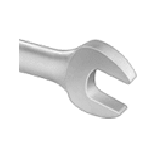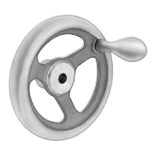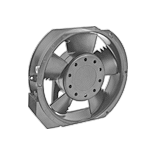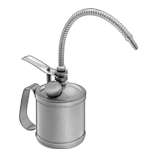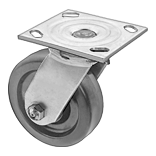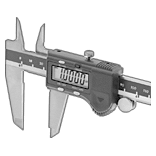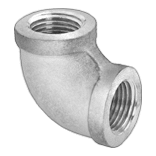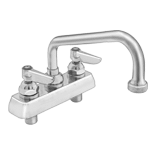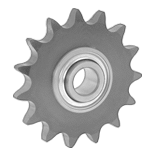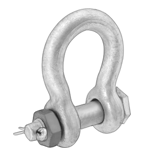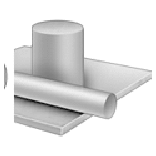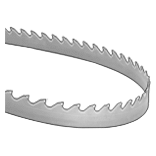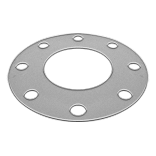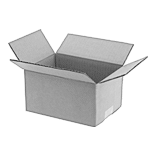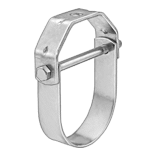Foam-Forming 3D Printer Filaments
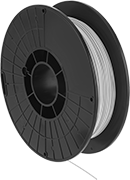
Print these polypropylene filaments into filters, gaskets, and other lightweight, foam-like parts that let air and gas pass through but repel water. They contain a filler that dissolves in water, forming hollow spaces that make up 45% of the part. Polypropylene is known for being rigid yet flexible, so it absorbs impacts and bounces back to shape after bending, making these filaments good for compressible seals and living hinges. It also resists hydrocholoric and phosphoric acids, as well as other nonoxidizing acids and bases.
These filaments work with fused filament fabrication (FFF) 3D printers. If using a glass print surface, apply an adhesive to prevent the filament from detaching. The recommended print speed is 25 mm/s. While polypropylene is likely to shrink, the filler in these filaments supports your design, preventing it from losing shape as it prints. Submerge your part in hot water for about 24 hours after printing to dissolve the filler and expose the pores.
For extra support when printing complex designs, use structural support 3D printer filaments. They dissolve in water at the same time as this filament’s filler.
Spool | |||||||||||||
|---|---|---|---|---|---|---|---|---|---|---|---|---|---|
| Dia., mm | Printing Temp. | For Printer Bed Temp. | Tensile Strength | Hardness | Max. Exposure Temp. | For Min. Nozzle Opening Dia., mm | Dia., mm | Dp., mm | Material | Wt., g | Color | Each | |
Polypropylene Plastic | |||||||||||||
| 1.75 | 190° to 240° C 374° to 464° F | 95° C to 125° C 203° F to 257° F | 1,000 psi (Poor) | Shore A90 (Medium Soft) | 140° C 284° F | 0.4 | 200 | 55 | Plastic | 500 | White | 0000000 | 0000000 |
| 2.85 | 190° to 240° C 374° to 464° F | 95° C to 125° C 203° F to 257° F | 1,000 psi (Poor) | Shore A90 (Medium Soft) | 140° C 284° F | 0.4 | 200 | 55 | Plastic | 500 | White | 0000000 | 000000 |
Foam-Forming Flexible 3D Printer Filaments
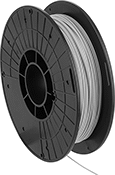
Create soft, stretchy parts that are lightweight and foam-like, letting air and gas pass through yet repelling water. These filaments are a TPE blend with a filler that dissolves in water, forming hollow spaces that make up to 45% of the part.
These filaments work with fused filament fabrication (FFF) 3D printers. If using a glass print surface, apply an adhesive to prevent the filament from detaching. The recommended print speed is 25 mm/s. Submerge your part in hot water for about 24 hours after printing to dissolve the filler and expose the pores.
For extra support when printing complex designs, use structural support 3D printer filaments. They dissolve in water at the same time as the filler in these filaments.
Tensile strength is the best measure of a filament’s overall strength. Similar to the stress applied on a rope during a game of tug-of-war, it’s the amount of pulling force a material can handle before breaking. A higher rating means a stronger filament. A tensile strength of 5,000 psi and above is considered good; 12,000 psi and above is excellent.
Maximum exposure temperature is the point at which a printed part will begin to deform. Above this temperature, your part will start to lose structural integrity.
Spool | |||||||||||||
|---|---|---|---|---|---|---|---|---|---|---|---|---|---|
| Dia., mm | Printing Temp. | For Printer Bed Temp. | Tensile Strength | Hardness | Max. Exposure Temp. | For Min. Nozzle Opening Dia., mm | Dia., mm | Dp., mm | Material | Wt., g | Color | Each | |
TPE Blend | |||||||||||||
| 1.75 | 220° to 250° C 428° to 482° F | 50° to 70° C 122° to 158° F | 150 psi | Durometer 91A (Medium Soft) | 49° C 120° F | 0.4 | 200 | 55 | Plastic | 500 | Beige | 0000000 | 000000 |
| 2.85 | 220° to 250° C 428° to 482° F | 50° to 70° C 122° to 158° F | 150 psi | Durometer 91A (Medium Soft) | 49° C 120° F | 0.4 | 200 | 55 | Plastic | 500 | Beige | 0000000 | 00000 |
